Related Research Articles
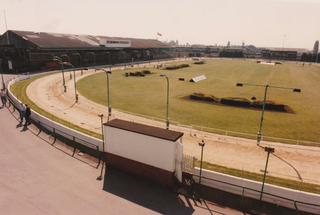
Romford Greyhound Stadium, referred to as Coral Romford Greyhound Stadium is a greyhound racing track located in Romford town centre in the London Borough of Havering in east London which is owned and operated by the Ladbrokes Coral group. The stadium has a capacity for over 1,700 people.

Catford Stadium was a historic greyhound racing stadium in Catford, a suburb of London.
Gay Future was the racehorse at the centre of an attempted fraud by an Irish betting syndicate in Great Britain in 1974 involving two chestnut horses. The plot's ringleaders were the millionaire Irish builder Tony Murphy, a racing enthusiast, and the Scottish trainer Antony Collins.
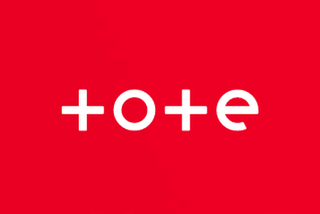
Tote Ireland is an Irish gambling company founded in 1929. It operates Ireland’s largest online pool betting website. Its product offering also includes sports betting. Business operations are led from its headquarters in Kildare.
Rochester Stadium was a greyhound racing stadium in Rochester, Kent.
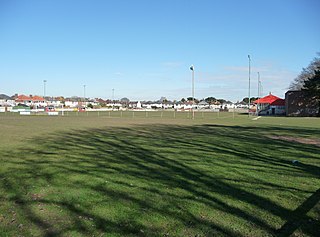
Victoria Park, Bournemouth is a football ground in Victoria Park in Bournemouth and has been the home of Bournemouth F.C. since 1890. It was also a short lived greyhound racing track from 1928 to 1934.
Dagenham Greyhound Stadium was a greyhound racing stadium in Dagenham, London.
Perry Hill Greyhound Stadium was a greyhound racing stadium in Catford, London.
Staines Greyhound Stadium was a greyhound racing stadium in Staines-upon-Thames.
The 1947 UK & Ireland Greyhound Racing Year was the 22nd year of greyhound racing in the United Kingdom and Ireland.
The 1950 UK & Ireland Greyhound Racing Year was the 25th year of greyhound racing in the United Kingdom and Ireland.

The 1960 UK & Ireland Greyhound Racing Year was the 34th year of greyhound racing in the United Kingdom and Ireland.
The 1961 UK & Ireland Greyhound Racing Year was the 35th year of greyhound racing in the United Kingdom and Ireland.
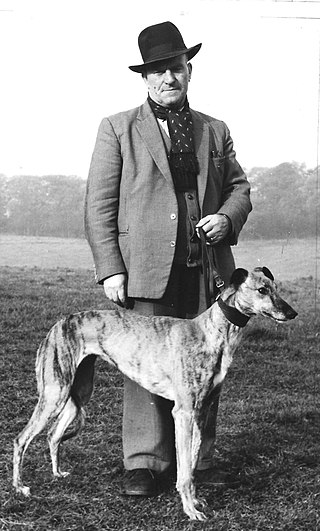
The 1963 UK & Ireland Greyhound Racing Year was the 37th year of greyhound racing in the United Kingdom and Ireland.
The 1964 UK & Ireland Greyhound Racing Year was the 38th year of greyhound racing in the United Kingdom and Ireland.
The 1965 UK & Ireland Greyhound Racing Year was the 39th year of greyhound racing in the United Kingdom and Ireland.
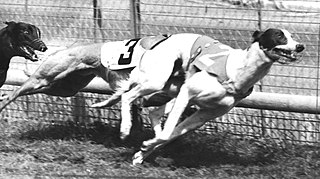
The 1978 UK & Ireland Greyhound Racing Year was the 52nd year of greyhound racing in the United Kingdom and Ireland.
The 1987 UK & Ireland Greyhound Racing Year was the 61st year of greyhound racing in the United Kingdom and Ireland.

The 1990 UK & Ireland Greyhound Racing Year was the 64th year of greyhound racing in the United Kingdom and Ireland.

The 1992 UK & Ireland Greyhound Racing Year was the 66th year of greyhound racing in the United Kingdom and Ireland.
References
- ↑ "British bookies may limit dog racing bets, 2 July". Montreal Gazette. 1964.
- ↑ "Great Britain:Operation Sandpaper". Time magazine.com. 10 July 1964.
- 1 2 ""One Dagenham Tote Winner May Be Paid." Times [London, England] 2 July 1964". The Times .
- 1 2 ""£10m. Greyhound Betting Coup Fails." Times [London, England] 1 July 1964". The Times .
- ↑ "Dagenham Stadium". Greyhound Derby.com.
- ↑ "One Dagenham Tote Winner May Be Paid." Times [London, England] 2 July 1964: 8. The Times Digital Archive.
- ↑ "Inflation Calculator". Bank of England. Archived from the original on 2014-10-06. Retrieved 2016-10-30.
- ↑ ""Four On Greyhound Plot Charge." Times [London, England] 4 Nov. 1965". The Times .
- ↑ ""No Reason To Stand Out." Times [London, England] 10 Nov. 1965". The Times .
- ↑ ""Bookmakers In Claim Against Stadium." Times [London, England] 16 Nov. 1965". The Times .
- ↑ ""Court Told Of 10,000-1 Odds." Times [London, England] 17 Nov. 1965". The Times .
- ↑ ""Adjournment In Greyhound Bets Case." Times [London, England] 9 Dec. 1965". The Times .
- ↑ ""Bookmakers Appeal Over Bets Coup." Times [London, England] 18 Jan. 1966". The Times .
- ↑ ""Costs For Men In Greyhound Case." Times [London, England] 20 Jan. 1966". The Times .
- ↑ Barnes, Julia (1988). Daily Mirror Greyhound Fact File. Ringpress Books. p. 414. ISBN 0-948955-15-5.